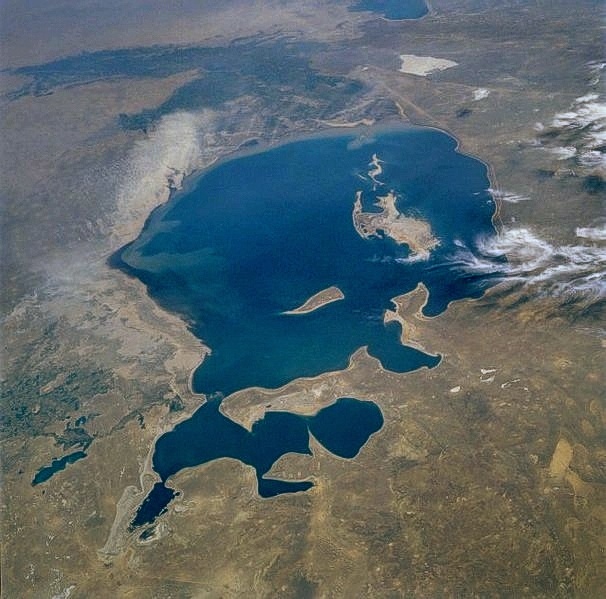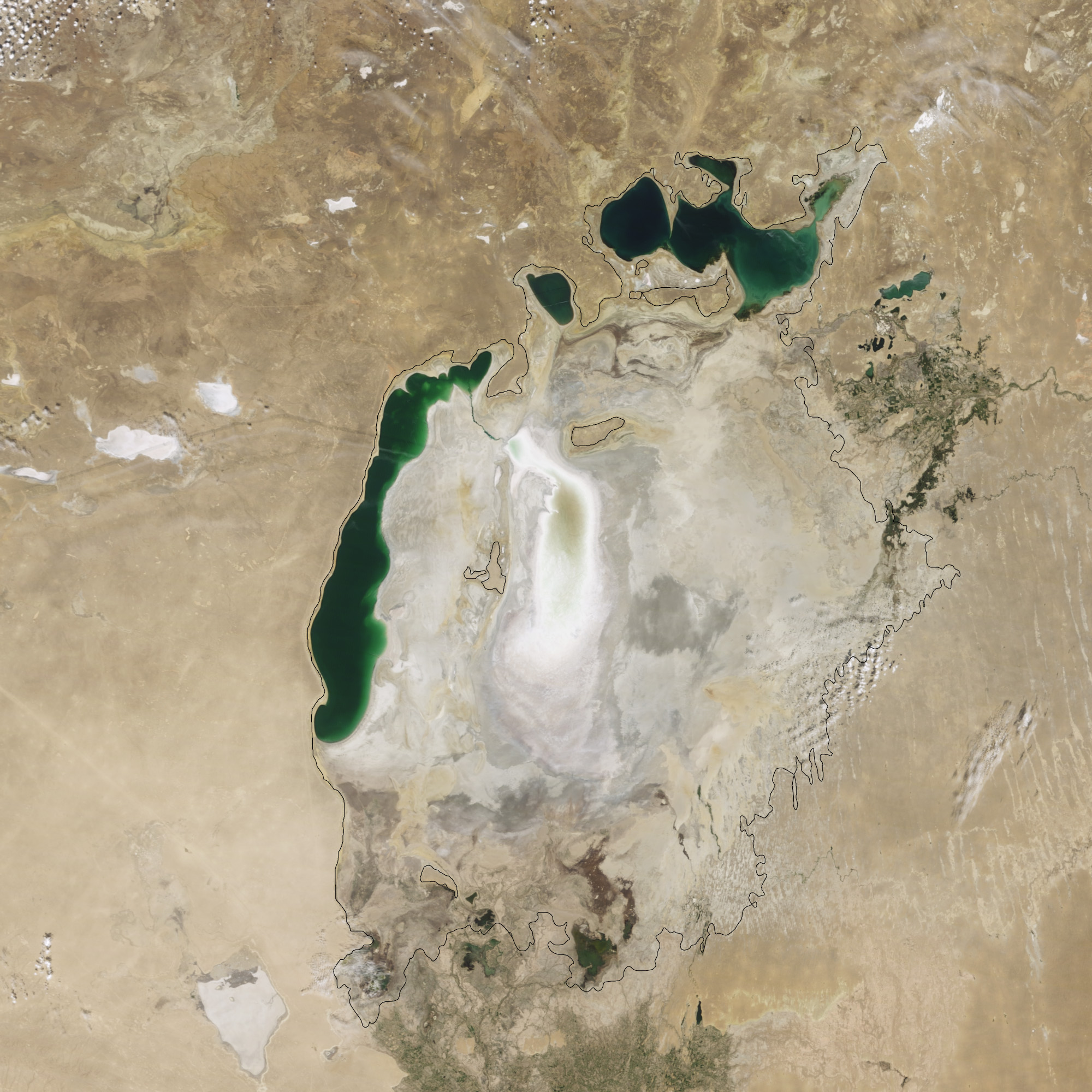If I asked you to point to the Aral Sea on a map, you might guess somewhere in central Asia, you know, one of those places like the Dead Sea or the Black Sea that sounds vaguely exotic and mysterious. It was, in fact, on the border between Kazakhstan and Uzbekistan, not far to the East of the Caspian Sea.
I say 'was', because it has shrunk at a horribly alarming rate. In 1985, the Aral Sea was the fourth largest lake in the world, covering approximately 26,000 square miles. This is a view of it from the north side, taken by a Space Shuttle.
Over the next couple of decades, the sea began to shrink quickly, due to irrigation works carried out in the 1960's by the Soviet Union. The canals they built diverted water away from the two main rivers that fed the Aral Sea, to cotton farms in the surrounding areas. Soviet Engineers predicted that this would cause the lake to dry up, but the projects went ahead anyway, without regard for the impact on the environment and people that lived around the Aral Sea.
August, 2009. The Aral Sea is now only the world's eighth largest lake, and is split into two portions that cover barely ten percent of its original surface area. The Little Aral Sea is the blob at the top (north) of the image, located within Kazakhstan. A dam has been constructed to hold the water in, and to slow evaporation. Water levels are now rising in this smaller portion of the Sea, enough to reduce salinity and allow fish stocks to recover. However, the southern Aral Sea, located in much poorer Uzbekistan, has no such project, and with no major source of water flowing into it, is likely to have vanished entirely by 2020.
This is not some small puddle. The amount of water lost from the Aral Sea is equivalent to completely draining Lake Erie and Lake Ontario, the two smallest of North America's five Great Lakes, some 900+ cubic kilometres of water. The fishing industry on the Aral Sea once employed 40,000 people and is now utterly destroyed. The main fishing town is now miles from any water, and the few fish that do remain have to compete with increasing salinity - more than 20 species of flora and fauna have become extinct. Boats litter the desert that was once the sea bed, a desert that is poisoned by chemicals and toxins from farming cotton, and from the Soviet chemical and biological weapons testing facility on Vozrozhdeniya or "Rebirth Island" (which is now no longer an island and is merely part of the exposed lake bed). Dust storms whip up the toxic sand and blast it across the basin, causing serious health problems for those who still live in the surrounding areas.
All in all, the Aral Sea is a tragic example of a government putting short term financial ideals ahead of long term environmental and human needs. Work is underway to try to save the Aral Sea but most projects are prohibitively expensive and totally impractical. It is very likely that the only remains of this once vast body of water will be a small lake and a poisoned, lifeless desert.


No comments:
Post a Comment